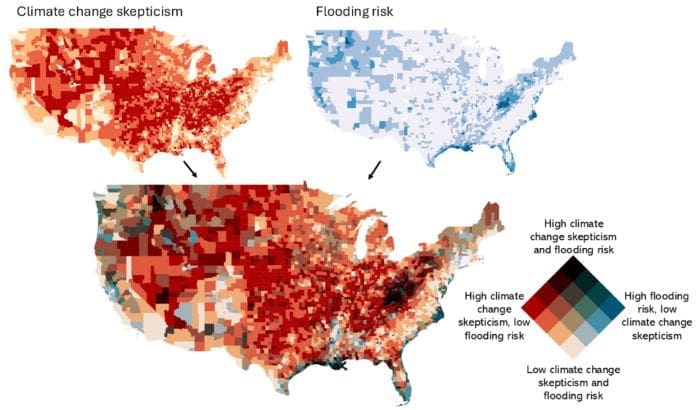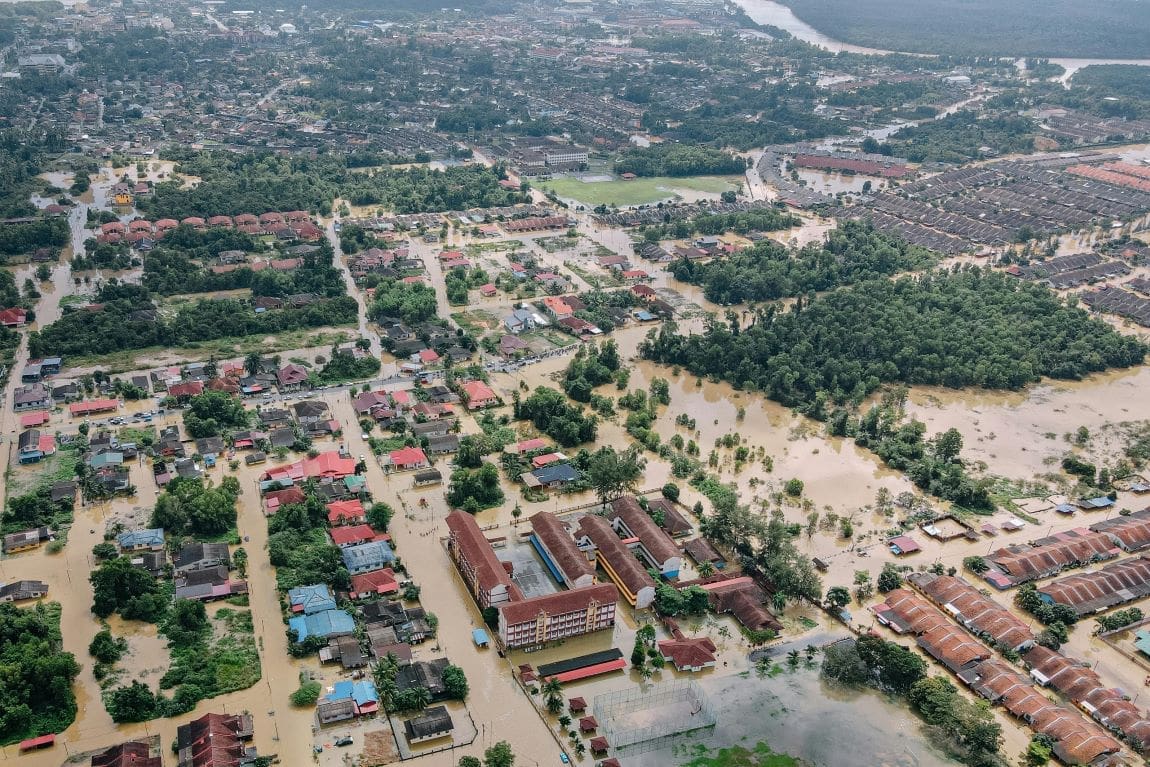University of Michigan | MP – A recent study has revealed a troubling geographic intersection between flood risk, climate change skepticism, and social vulnerability in the United States. The research highlights a significant underestimation of flood hazards in the Federal Emergency Management Agency’s (FEMA) Flood Insurance Rate Maps, particularly in Appalachia, parts of New England, and the Northwest. These regions not only face heightened flood risks but also grapple with high levels of social vulnerability and prevalent skepticism toward climate science.

In certain parts of the United States, especially Appalachia, New England and the Northwest, the ability of residents to prepare for and respond to flooding is being undercut on three different levels.
This is according to a new study from the University of Michigan’s School for Environment and Sustainability.
“It’s a very worrying confluence that does keep me up,” said Joshua Newell, a professor with the school’s Center for Sustainable Systems and senior author of the study. “The communities that are most at risk of catastrophic flooding are the least prepared and the least likely to get prepared.”
He has termed this three-fold susceptibility ‘triple exposure’.
The first factor in this exposure is that the Federal Emergency Management Agency has underestimated the flooding risks in many counties across the country. Secondly, markers of social vulnerability, such as low income and mobility limitations, hamper the ability of individuals to take preventative measures, evacuate before floods and recover and rebuild after a flooding event.
Lastly, in certain communities, there’s a pervasive skepticism that climate change is happening at all.
“It’s not just the flooding, it’s not only that it’s affecting socially vulnerable populations, there is also an extra layer of vulnerability in that people are unprepared and unaware of the risk they are facing,” said Dimitrios Gounaridis, a U-M research specialist and co-author of the new report.
Geographically, the team found that triple exposure was most pronounced in Appalachia, an area devastated by flooding following Hurricane Helene. The team’s study was in the final stages of review before its publication when Helene made landfall in the U.S.
“Unfortunately, this paper has become timely,” Gounaridis said.
The areas hit hardest by the floods caused by Hurricane Helene, including Asheville, North Carolina, were just west of the Appalachian triple exposure hotspot the researchers found. But the team said the disaster underscores how dangers become magnified when people don’t fully appreciate their risks.
“Asheville was supposed to be a climate haven,” Newell said – a location that would be insulated from the worst consequences of climate change.
“It’s clear from our paper that it, or at least the region around it, is not. I think this really highlights the need for preparation in these high-risk areas and the urgency of doing that work.”
To identify areas facing triple exposure, the team combined what Gounaridis characterized as dozens of layers of data. That included results from a national Yale University survey on climate attitudes, data from a federal social vulnerability index and household level flood risk estimates from the nonprofit First Street Foundation, which is regarded as more modern and robust than FEMA’s.
This not only revealed areas facing outsized flood risks, but also opportunities to help communities in those regions bolster their preparedness and resilience, said Wanja Waweru, who worked on the project while earning her master’s degree at U-M.
“That could be education campaigns to help folks better understand climate change or policies that help lift people out of poverty so they can have the extra funds in their pockets to evacuate or rebuild after a disaster,” she said.
“I think agencies and organizations in these areas should continue their efforts to help folks understand their risks. Hopefully, this research can illuminate ways to meet them where they are.”
Journal Reference:
Dimitrios Gounaridis, Wanja Waweru, and Joshua P. Newell, ‘Triple exposure: the geographic correlation between flood risk, climate skepticism, and social vulnerability in the United States’, Environmental Research Letters 19, 114084 (2024). DOI: 10.1088/1748-9326/ad801a
Article Source:
Press Release/Material by University of Michigan
Featured image credit: Pok Rie | Pexels




